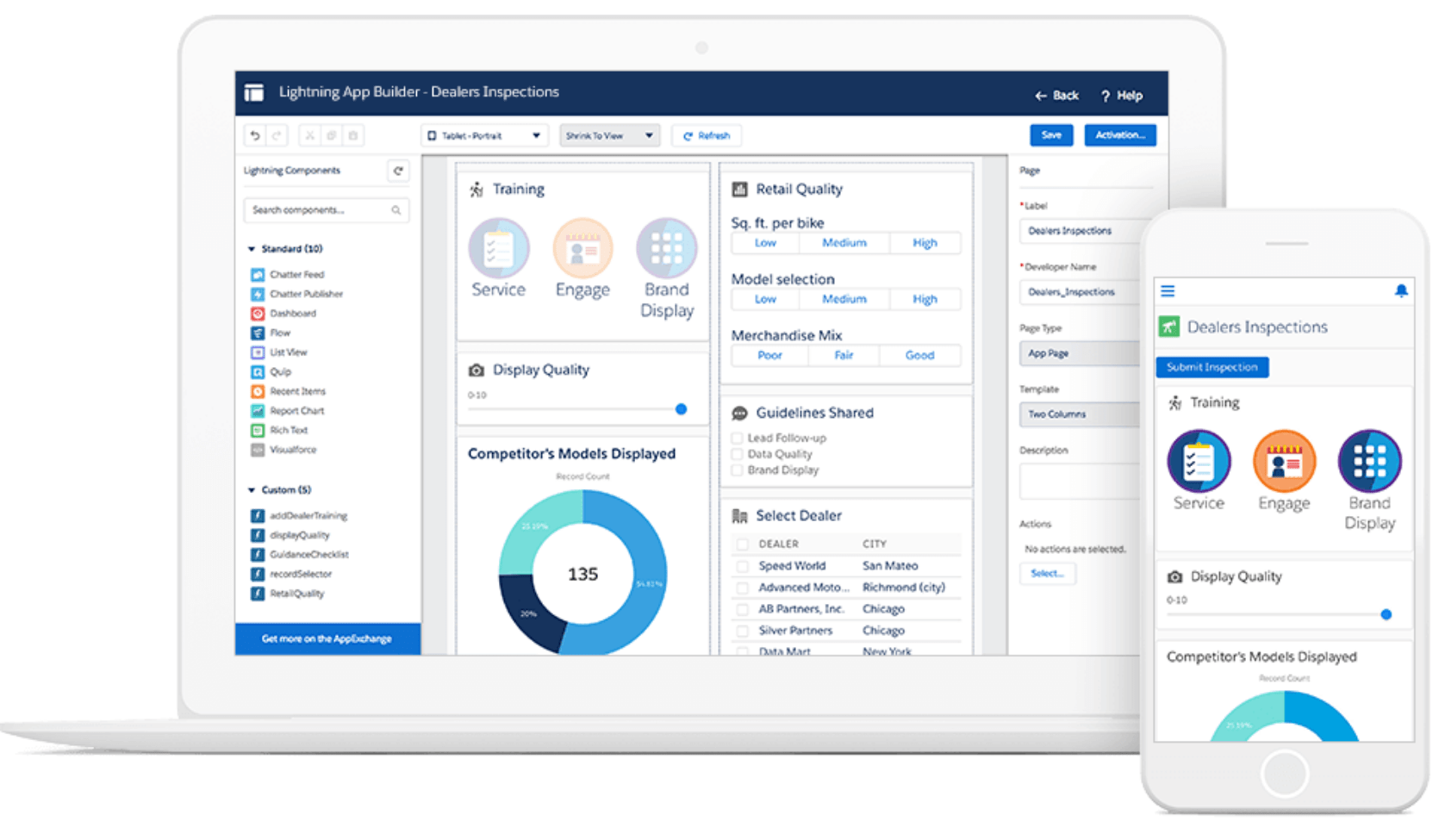The Salesforce Lightning Platform has revolutionized the way businesses manage customer relationships and streamline operations. This innovative architecture not only enhances user experience but also provides robust tools for developers to create applications efficiently. In this article, we will explore the key aspects of the Salesforce Lightning Platform, its enterprise architecture, and provide insights into downloadable resources like the PDF, making it easier for businesses to leverage its capabilities.
Understanding the nuances of Salesforce Lightning Platform is crucial for organizations looking to maximize their operational efficiency. By delving into its enterprise architecture, businesses can align their strategies with the platform's features. Furthermore, resources such as PDFs can serve as valuable references for both new and experienced users, ensuring they stay updated with best practices and implementation strategies.
As we navigate through this article, we will cover various components of the Salesforce Lightning Platform's enterprise architecture, including its core features, benefits, and how to access important documentation. Whether you are a developer, a business analyst, or an executive, this guide aims to equip you with the knowledge needed to leverage the Salesforce Lightning Platform effectively.
Table of Contents
- Overview of Salesforce Lightning Platform
- Understanding Enterprise Architecture
- Key Components of Salesforce Lightning
- Benefits of Using Salesforce Lightning Platform
- Accessing Salesforce Lightning Platform PDFs
- Best Practices for Implementation
- Case Studies: Successful Implementations
- Conclusion and Call to Action
Overview of Salesforce Lightning Platform
The Salesforce Lightning Platform is a powerful suite of tools designed to enhance productivity and collaboration within organizations. It offers a range of features that facilitate the development of applications, integration of services, and management of customer relationships. Key highlights of the platform include:
- Intuitive user interface
- Robust application development capabilities
- Seamless integration with other Salesforce products
- Real-time analytics and reporting
Understanding Enterprise Architecture
Enterprise architecture (EA) refers to the strategic planning and organization of an organization's IT infrastructure. In the context of the Salesforce Lightning Platform, EA encompasses the framework that supports the integration and deployment of various services and applications. Key aspects of EA in Salesforce include:
- Alignment of business goals with IT capabilities
- Integration of legacy systems with modern applications
- Scalability and flexibility in application development
Core Principles of Enterprise Architecture
Several core principles guide the development of a robust enterprise architecture within the Salesforce Lightning Platform:
- Modularity: Applications should be designed as independent modules to enhance flexibility.
- Interoperability: Seamless communication between different applications and services is essential.
- Scalability: The architecture must support growth and changes in business needs.
Key Components of Salesforce Lightning
The Salesforce Lightning Platform comprises various components that work together to deliver a cohesive user experience. Key components include:
- Lightning Components: Reusable building blocks for creating applications.
- Lightning App Builder: A drag-and-drop interface for building custom applications.
- Lightning Flow: A tool for automating business processes and workflows.
Benefits of Using Salesforce Lightning Platform
Implementing the Salesforce Lightning Platform offers numerous benefits for organizations, including:
- Enhanced user experience through intuitive design.
- Increased productivity with streamlined workflows.
- Improved collaboration across teams and departments.
- Faster development cycles with reusable components.
Accessing Salesforce Lightning Platform PDFs
To maximize the benefits of the Salesforce Lightning Platform, accessing reliable resources is crucial. PDFs can serve as essential guides, offering insights into best practices, implementation strategies, and troubleshooting tips. Here are a few ways to access relevant PDFs:
- Visit the official Salesforce website for documentation and resources.
- Check out community forums and user groups for shared materials.
- Utilize online platforms like SlideShare for presentations and whitepapers.
Best Practices for Implementation
Successful implementation of the Salesforce Lightning Platform requires careful planning and execution. Here are some best practices to consider:
- Conduct a thorough needs assessment before deployment.
- Engage stakeholders throughout the implementation process.
- Provide comprehensive training for users to ensure adoption.
- Regularly review and update the architecture to align with business needs.
Case Studies: Successful Implementations
Examining real-world examples of organizations that have successfully implemented the Salesforce Lightning Platform can provide valuable insights. Here are a few notable case studies:
- Company A: Improved customer engagement through customized applications.
- Company B: Streamlined internal processes, resulting in increased efficiency.
- Company C: Enhanced data analytics capabilities, leading to better decision-making.
Conclusion and Call to Action
In conclusion, the Salesforce Lightning Platform offers a comprehensive framework for businesses to enhance their operational efficiency and customer relationship management. By understanding its enterprise architecture and leveraging available resources like PDFs, organizations can maximize the platform's potential.
We encourage you to explore additional resources, leave your comments, or share your experiences with the Salesforce Lightning Platform to foster community engagement. Don't forget to check out our other articles for more insights!
Thank you for reading, and we look forward to seeing you again soon!




